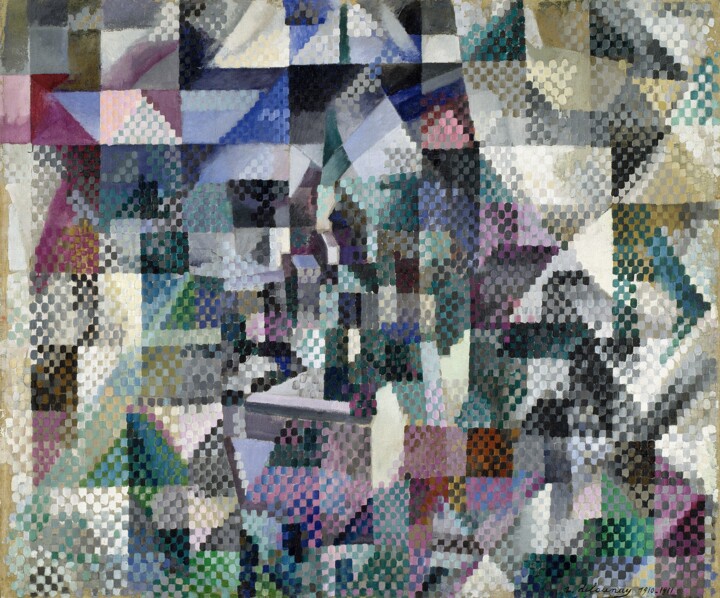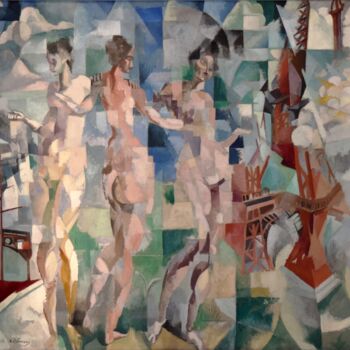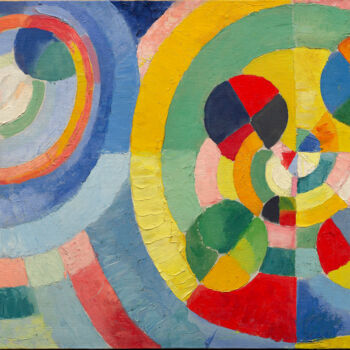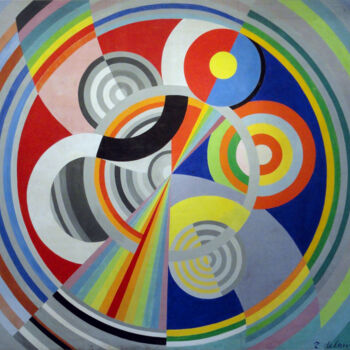Window on the City No. 3. (1912) Pintura por Robert Delaunay
No está en venta
Vendido por Artmajeur Editions
Esta impresión está disponible en varios tamaños.
Vendido por Artmajeur Editions
-
Obra de arte original
Pintura,
Oleo
en Lienzo
- Dimensiones Altura 44,8in, Anchura 51,5in
- Enmarcado Esta obra de arte no está enmarcada.
- Categorías Abstracto Geométrico
Robert Delaunay was a French artist who was born on April 12, 1885, and died on October 25, 1941. He co-founded the Orphism art movement with his wife Sonia Delaunay and others. This movement is known for its use of bright colors and geometric shapes. The ideas in his later works were more vague. His bold use of color and love of experimenting with depth and tone were his biggest influences.
The word "Orphism" is most often used to describe Delaunay. From 1912 to 1914, he made abstract paintings based on the way brilliant colors looked and how they moved so much that they became the form. His ideas mostly have to do with color and light. Stanton Macdonald-Wright, Morgan Russell, Patrick Henry Bruce, Der Blaue Reiter, August Macke, Franz Marc, Paul Klee, and Lyonel Feininger were all influenced by his ideas. Guillaume Apollinaire, an art critic, was very influenced by Sonia Delaunay's ideas about color. He often used Delaunay's ideas to explain Orphism, which he had named. Delaunay was very interested in color as a means of expression and structure. His interest in color was kept alive by his study of color.
His writings on color, which were influenced by scientists and theorists, are intuitive and can sometimes be random statements. This is because he thinks that color is a thing in and of itself, with its own ways of expressing and taking shape. He thinks that painting is a visual art with no intellectual elements, and that how we see things depends on how different colors of light hit our eyes. The contrasts and harmony of colors make the eye move at the same time, just like how nature moves. Painting is about what people see.
Neoimpressionism is a strong part of his early work. In Night Scene, for example, there is a lot going on, as shown by the lively brushstrokes in bright colors against a dark background, which don't define solid objects but rather the areas around them.
The neoimpressionists later gave up on the spectral colors they used. The Eiffel Tower series showed how solid things break apart and become one with space. Cézanne, Analytical Cubism, and Futurism were all important to this series. In the Eiffel Tower, solid things and the space around them blend together. This is accompanied by the intense movement of geometric planes, which is more dynamic than the static balance of Cubist forms.
-
Nacionalidad:
FRANCIA

- Fecha de nacimiento : 1885
- Dominios artísticos: Representado por una galería,
- Grupos: Artistas Franceses Contemporáneos Artistas presentados por una galería









